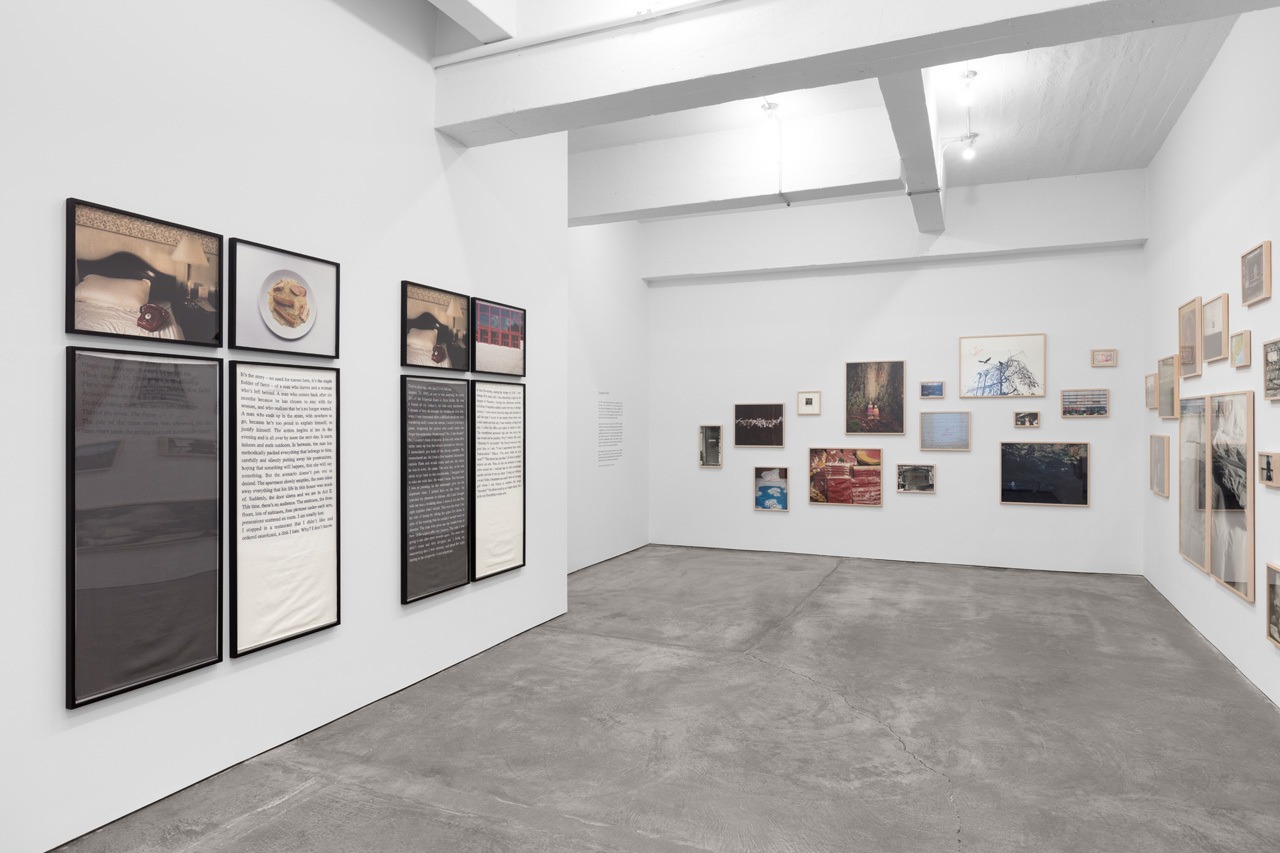Sophie Calle, Bruce Conner, Paul Pfeiffer
Documents & Recitations
26 Oct 2019 - 08 Feb 2020
SOPHIE CALLE, BRUCE CONNER, PAUL PFEIFFER
Documents & Recitations
26 October 2019 – 8 February 2020
NEW YORK—Photographic works by Sophie Calle, Bruce Conner and Paul Pfeiffer will be presented in a three-person exhibition titled “Documents & Recitations” at Paula Cooper Gallery opening October 26, 2019. The works use the format of the series to construct new narratives, and engage notions of individual memory and collective perception as translated through the medium of photography. The show will be on view from October 26 to February 8, 2019, at 521 West 21st Street.
Since the late 1970s, Sophie Calle (b. 1953 in Paris, France) has made work that employs provocative and sometimes controversial methods for confronting her emotional life. Created in 2000, Exquisite Pain chronicles a trip Calle took to Asia that indirectly lead to the end of her relationship. Calle writes: “In 1984 I was awarded a grant to go to Japan for three months. I left on October 25, not knowing that this date marked the beginning of a 92-day countdown to the end of a love affair—nothing unusual, but for me then the unhappiest moment of my whole life.” Calle’s experience is told through photos and ephemera over a ninety-two-day period that the artist saw as a countdown to her rejection and despair. Each photograph or document is stamped with a number indicating the remaining amount of “days until unhappiness.”
One of the foremost American artists of the postwar era, Bruce Conner (b.1933 in McPherson, KS; d. 2008 in San Francisco, CA) worked across a vast range of media, including pioneering works of assemblage, collage, drawing, photography and film. On view in the gallery’s front room are twelve works from Conner’s 1978 series of PUNK PHOTOS. The images, shot at the nascent San Francisco punk club Mabuhay Gardens, capture the itching, restless energy of the city’s emerging punk music scene and underground concerts of the 70s. The artist remarked, “I had always liked the idea of action photos... Like-sport events. Basketball. They’re floating in the air, part of this suspended sphere, and they’ve got these beatific looks on their faces, they’re in anguish. Or combat photography” (Bruce Conner Mabuhay Gardens, Düsseldorf: NRW Forum Kultur und Wissenschaft, 2006).
Known for his innovative manipulation of digital media, Paul Pfeiffer (b. 1966 in Honolulu, HI) recasts the visual language of popular spectacle to reexamine its psychological, cultural and socioeconomic implications. In 24 Landscapes, 2000, the artist presents a collection of idyllic beach scenes—mute, uninhabited images taken from well-known stills by George Barris depicting Marilyn Monroe weeks before her death in 1962. Through digital imaging Pfeiffer has meticulously retouched the photographs to eliminate the iconic star, leaving only the picturesque shorelines. Devoid of their intended subject, the work prompts the viewer to reflect on the phenomenon of celebrity, the artifice of cultural narratives, and the power of mass media.
Documents & Recitations
26 October 2019 – 8 February 2020
NEW YORK—Photographic works by Sophie Calle, Bruce Conner and Paul Pfeiffer will be presented in a three-person exhibition titled “Documents & Recitations” at Paula Cooper Gallery opening October 26, 2019. The works use the format of the series to construct new narratives, and engage notions of individual memory and collective perception as translated through the medium of photography. The show will be on view from October 26 to February 8, 2019, at 521 West 21st Street.
Since the late 1970s, Sophie Calle (b. 1953 in Paris, France) has made work that employs provocative and sometimes controversial methods for confronting her emotional life. Created in 2000, Exquisite Pain chronicles a trip Calle took to Asia that indirectly lead to the end of her relationship. Calle writes: “In 1984 I was awarded a grant to go to Japan for three months. I left on October 25, not knowing that this date marked the beginning of a 92-day countdown to the end of a love affair—nothing unusual, but for me then the unhappiest moment of my whole life.” Calle’s experience is told through photos and ephemera over a ninety-two-day period that the artist saw as a countdown to her rejection and despair. Each photograph or document is stamped with a number indicating the remaining amount of “days until unhappiness.”
One of the foremost American artists of the postwar era, Bruce Conner (b.1933 in McPherson, KS; d. 2008 in San Francisco, CA) worked across a vast range of media, including pioneering works of assemblage, collage, drawing, photography and film. On view in the gallery’s front room are twelve works from Conner’s 1978 series of PUNK PHOTOS. The images, shot at the nascent San Francisco punk club Mabuhay Gardens, capture the itching, restless energy of the city’s emerging punk music scene and underground concerts of the 70s. The artist remarked, “I had always liked the idea of action photos... Like-sport events. Basketball. They’re floating in the air, part of this suspended sphere, and they’ve got these beatific looks on their faces, they’re in anguish. Or combat photography” (Bruce Conner Mabuhay Gardens, Düsseldorf: NRW Forum Kultur und Wissenschaft, 2006).
Known for his innovative manipulation of digital media, Paul Pfeiffer (b. 1966 in Honolulu, HI) recasts the visual language of popular spectacle to reexamine its psychological, cultural and socioeconomic implications. In 24 Landscapes, 2000, the artist presents a collection of idyllic beach scenes—mute, uninhabited images taken from well-known stills by George Barris depicting Marilyn Monroe weeks before her death in 1962. Through digital imaging Pfeiffer has meticulously retouched the photographs to eliminate the iconic star, leaving only the picturesque shorelines. Devoid of their intended subject, the work prompts the viewer to reflect on the phenomenon of celebrity, the artifice of cultural narratives, and the power of mass media.

